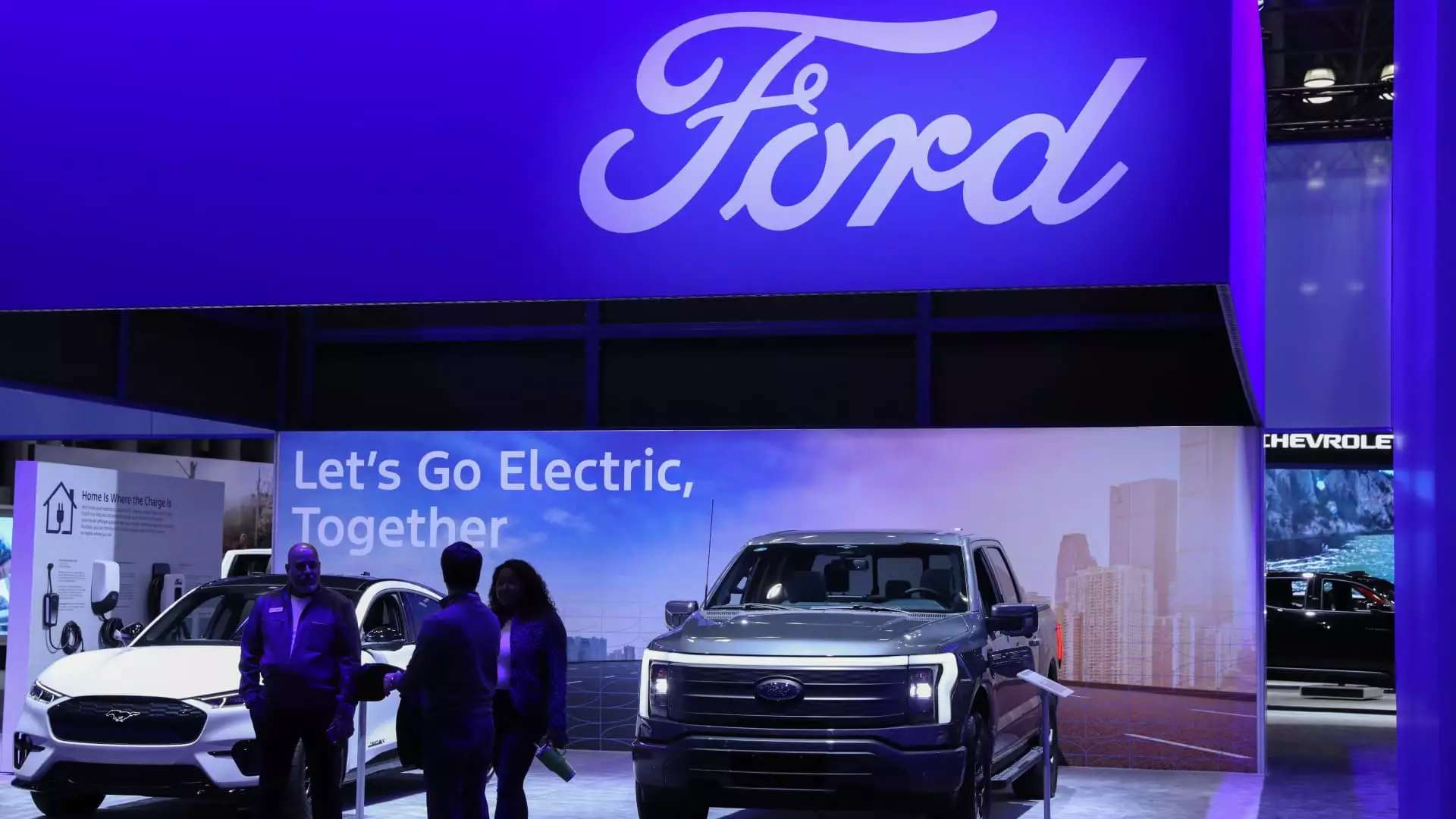Ford Motor Company, a stalwart in the automotive industry, is facing a crucial juncture in its evolution as it shifts its focus in electric vehicle (EV) production. On a recent Wednesday, Ford announced significant changes, which include delaying the production of its next-generation all-electric pickup truck and canceling plans for a new three-row electric SUV. This article aims to dissect Ford’s recent announcements and analyze their implications for the company, its stakeholders, and the broader EV market.
In a world where electric vehicles are becoming more mainstream, Ford’s decision to pivot towards hybrid models and commercial electric vehicles reflects an acute awareness of market dynamics. Ford CFO John Lawler emphasized the company’s intent to streamline its operations to deliver a more capital-efficient and profitable electric vehicle business. Instead of investing heavily in all-electric models, Ford will allocate approximately 30% of its capital expenditures to EV initiatives, down from 40%. This shift in focus suggests a calculated response to slower-than-anticipated EV penetration in the market.
The ambitious $5.6 billion plant in Tennessee, originally expected to begin vehicle production shortly, will see its timelines adjusted. While battery cell production remains slated for a 2025 start, the delay in truck production indicates that Ford is reassessing its approach to align with consumer preferences and economic viability. The decision to continue developing electric commercial vehicles, particularly a new van set for 2026, shows that Ford is not entirely abandoning the electric space. Instead, it is recalibrating its focus on segments that promise greater returns.
The auto industry is notoriously volatile, and Ford’s recent adjustments underscore the challenges of navigating the rapidly changing landscape of electric mobility. Despite its innovative strides with vehicles like the Ford Mustang Mach-E and the F-150 Lightning, the company has faced hurdles in achieving profitability from its EVs. The competition is stiff, and consumer behavior is evolving. Ford’s experience over the past two years has informed it that there is a burgeoning demand for greater electrification choices among customers, which had previously not been on its roadmap.
These strategic pivots demonstrate Ford’s attempt to leverage existing market advantages in commercial vehicles and traditional truck segments. As excitement over consumer EVs grows, a clear delineation between different vehicle types and their target markets is becoming imperative. Lawler’s remarks about nimbleness and customer feedback suggest that Ford is prioritizing adaptability as it maneuvers the intricacies of demand and production rationalization.
The decision to delay production and cancel the three-row SUV is not without financial repercussions. Ford has announced a significant special noncash charge, amounting to approximately $400 million, as it writes down product-specific manufacturing assets tied to these canceled plans. Along with potential additional expenditures estimated at up to $1.5 billion, this emphasizes the financial toll of recalibrating their production strategy.
These financial impacts mirror broader trends within the automotive industry, where companies are grappling with the economics of EV production. As Ford fine-tunes its framework for electrification, it is also managing investor sentiments, balancing innovation while keeping an eye on profitability metrics. The transparency in reporting future capital expenditures will be critical in maintaining stakeholder trust.
As the automotive landscape evolves, Ford’s decision to recalibrate its electric vehicle strategy may well position it for longer-term success, even if it incurs immediate costs. By channeling resources into hybrid technologies and commercial vehicles, Ford may be honing in on niches that promise steadier returns amidst uncertainty in the EV space.
The company plans to communicate more on its electrification strategy and profitability expectations by mid-2025, offering reassurances to investors and consumers alike. Ford’s response embodies a pragmatic approach, reaffirming its position as a learning organization ready to adapt. As it navigates this delicate transition, the focus remains on balancing innovation with economic realities—an endeavor that many in the industry are currently grappling with.

